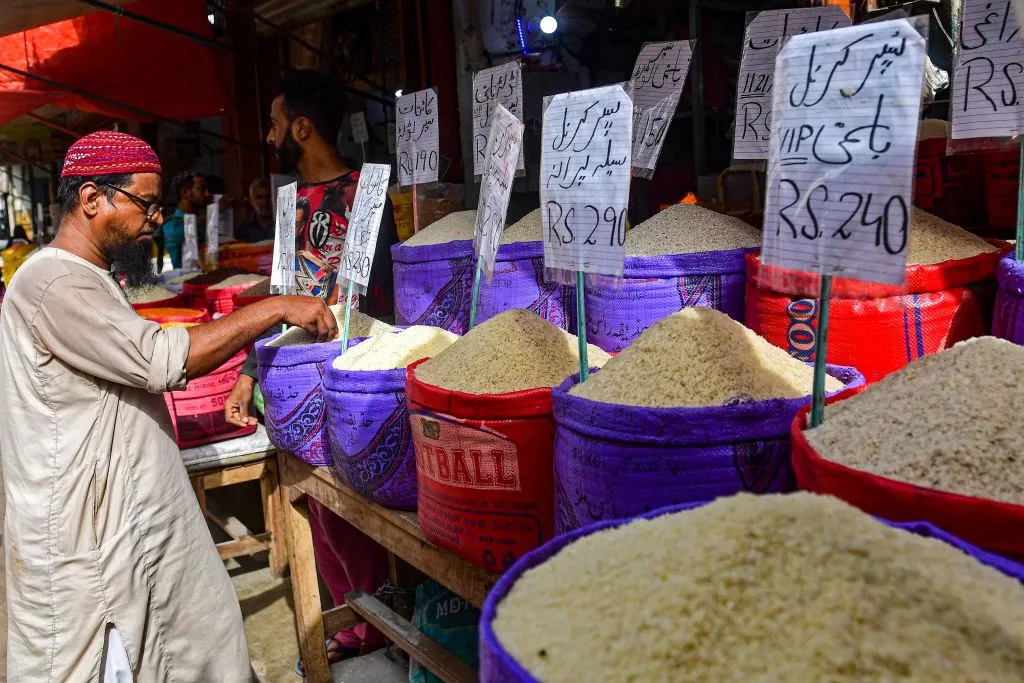Pakistan’s rice exports are likely to jump to a record high in the year ending in June as rival India’s decision to curb its own shipments forces buyers to purchase more from Islamabad, which is offering the grain at nearly 16-year-high prices.
The record exports are helping to alleviate tight supplies following the restrictions imposed last year by India, the world’s biggest exporter, and will bolster Pakistan’s depleted foreign exchange reserves, which are crucial for financing imports.
“We’ve seen a solid demand for rice in the last few months, mainly because India stopped exporting,” Chela Ram Kewlani, chairman of the Rice Exporters Association of Pakistan (REAP) told Reuters.
India, which ordinarily ships nearly 40 percent of globally traded rice, banned exports of non-basmati white rice in a surprise move last year and also imposed an export duty on parboiled rice.
Pakistan’s exports could jump to 5 million metric tons in the 2023/24 financial year, up from last year’s 3.7 million tons, Kewlani said.

Some industry officials are even more optimistic, suggesting that exports could reach 5.2 million tons, given the substantial improvement in production this year.
Pakistan could produce 9 to 9.5 million tons of rice in 2023/24 after production fell to 5.5 million tons a year ago because of floods, said a New Delhi-based dealer with a global trade house.
“Higher production and elevated global prices are allowing Pakistan to export at a rapid pace. In December alone Pakistan exported around 700,000 tons of rice,” the dealer said.
Basmati rice exports could jump 60 percent this year to 950,000 tons, while non-basmati exports could surge 36 percent to 4.25 million tons, he said.
In terms of value, Pakistan’s rice exports could fetch more than $3 billion this year, an increase from the previous year’s $2.1 billion, said Aadil Nakhoda, assistant Professor at Karachi-based Institute of Business Administration.
Traditionally, India offered non-basmati rice at a lower price than Pakistan.

However, with India out of the market, buyers are switching to Pakistan, and local prices are gradually rising despite higher production, said Hammad Attique, director, of sales & marketing at Lahore-based Latif Rice Mills.
Pakistan is offering 5 percent broken white rice at around $640 per ton and parboiled rice at around $680 per ton, up from $465 and $486 respectively a year ago.
Pakistan currently exports non-basmati rice mainly to Indonesia, Senegal, Mali, Ivory Coast, and Kenya and premium basmati rice to the European Union, Qatar, and Saudi Arabia, dealers said.
In India’s absence, Vietnam, Thailand, and Pakistan are trying to fill the gap. However, Pakistan’s relative proximity to buying countries in the Middle East, Europe, and Africa is providing it with a freight advantage, said a Mumbai-based dealer.
“India is likely to review export curbs after the elections in May. Pakistani exporters have already shipped around two-thirds of the entire year’s shipments, and they are expected to sell the entire quantity before May-end,” the dealer said.
Pakistani farmers have been getting record prices for their paddy, which is likely to encourage them to expand planting area in the next season, said Kewlani.
“Even in the next season Pakistan will have a bigger surplus for exports if weather supports,” he said.




